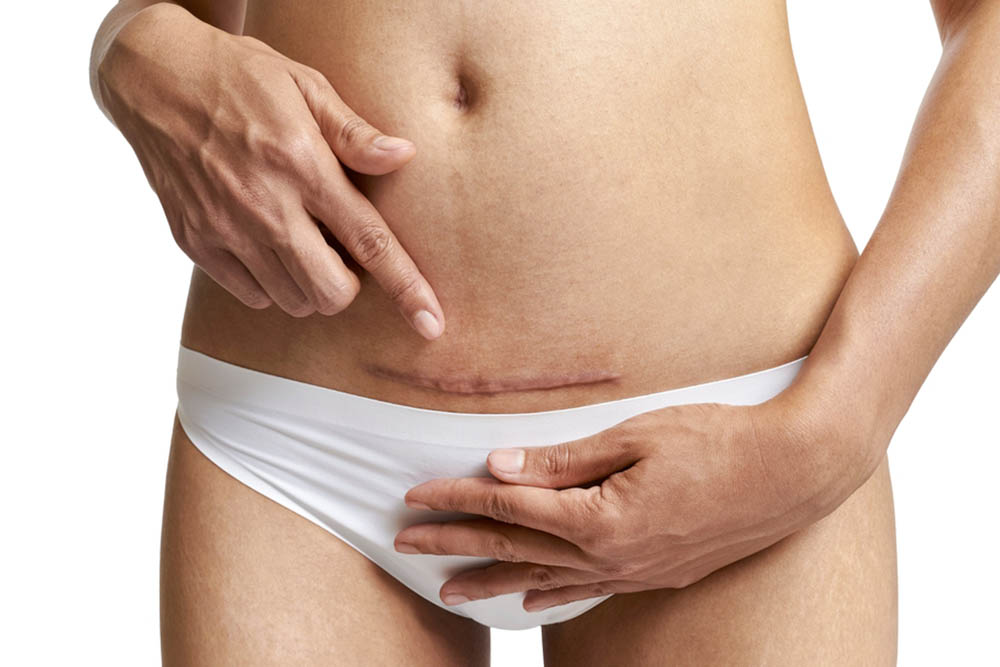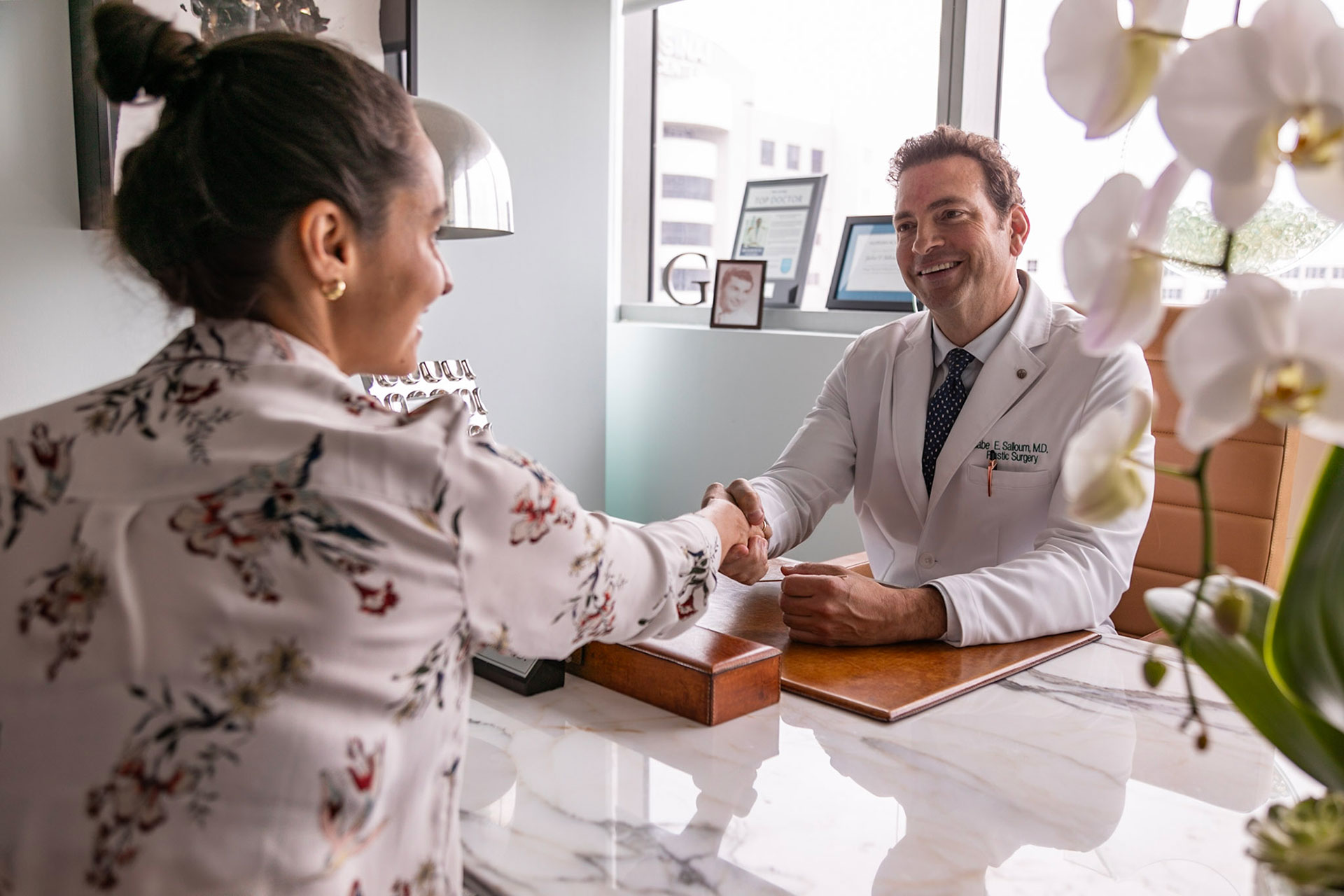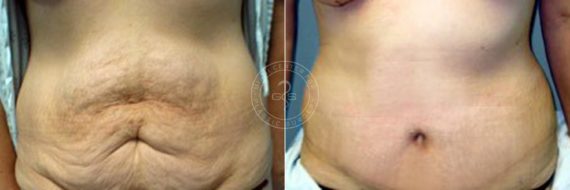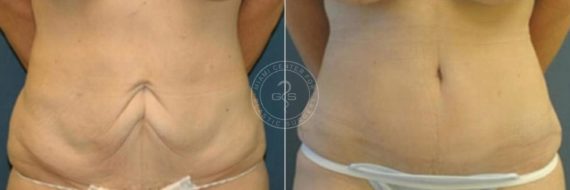
Keloid scars are often a concern for individuals thinking about a tummy tuck. These types of scars can develop because the body reacts strongly to skin injuries, such as surgical cuts. This article will explore keloid scars, the tummy tuck process, and ways to manage and treat keloid scars after a tummy tuck.
The Appearance of Keloid Scars After a Tummy Tuck
- Keloid scars result from excessive collagen production, leading to raised, thickened scars that can extend beyond the incision.
- Individuals with darker skin tones or a family history of keloids are at higher risk of developing keloid scars after a tummy tuck.
- Proper surgical techniques, like minimizing tension on wound edges, can reduce the likelihood of keloid formation.
- Postoperative care, such as keeping the incision clean and avoiding sun exposure, is crucial for preventing keloid scars.
- Treatments for keloid scars include silicone sheets, corticosteroid injections, and laser therapy, with surgical revision being a last resort.
What are Keloid Scars?
Keloid scars, also known as pathologic scars, are a type of overgrown scar tissue that extends beyond the original wound area. This can be an issue for patients considering procedures such as a tummy tuck. Keloid scars have a raised, thick, and irregular look, often appearing shiny and darker than the nearby skin, which may be more noticeable on darker skin tones.
Unlike hypertrophic scars, another type of raised scar that stays within the original wound’s boundaries, keloid scars extend beyond these boundaries, creating a more prominent, more visible scar.
Keloid scars result from an overproduction of collagen during the wound-healing process, leading to an excess of collagen fibers in the scar tissue. This excess collagen production increases the size and thickness of the scar, leading to the characteristic bumpy or cauliflower-like appearance of keloid scars.
Keloid scars can appear on any part of the body, but they are often seen in areas with less fat, like the chest, back, and earlobes. They can also develop at the site of surgical cuts, such as those from a tummy tuck.
Tummy Tuck Before and After Pictures
*All patients are unique and individual results may vary.
Keloid Scars After a Tummy Tuck
The formation of keloid scars after a tummy tuck is particularly prevalent in individuals with a genetic component or predisposition to keloid formation. When the body heals from the surgical incisions made during a tummy tuck, it produces collagen fibers to repair the wound. In some individuals, collagen production increases excessively, leading to the formation of a keloid scar.
Factors That May Increase the Risk of Keloid Formation
Certain factors can increase the risk of keloid formation following tummy tuck surgery. This adverse scar condition can be more common in darker skin types due to the development of skin discoloration. Those with a family history of keloids and being of a particular age group (10-30 years old) are also at risk.
Other factors, such as tension on the wound edges, infection, and poor wound care, can also contribute to keloid formation.
How to Identify Keloid Scars
Keloid scars are typically characterized by their raised, thick, and irregular appearance, often appearing shiny and darker than the surrounding skin. These scars can be pink, red, or darker than the surrounding skin.
Unlike hypertrophic scars, which stay within the boundaries of the original wound, keloid scars extend beyond these boundaries. They may also continue to grow and may not regress over time.


SPECIALIST CARE YOU CAN TRUST
Dr. Salloum is supported by a brilliant team of caring staff members.
You can trust the entire staff to help make your visit as comfortable and safe as possible!
Managing and Treating Keloid Scars
Although keloid scars can be challenging to treat, several strategies can help manage and treat these scars.
Prevention Strategies Before and During the Tummy Tuck Procedure
Prevention indeed plays a pivotal role when it comes to managing keloid scars, especially in the context of a tummy tuck procedure.
One such strategy involves the use of meticulous surgical techniques. The surgeon, ideally a board-certified plastic surgeon with expertise in body contouring procedures, can minimize excessive tension on the wound edges, a factor that can contribute to abnormal scarring.
This can be achieved through careful scar placement and closure techniques, including deep wound closure techniques that distribute tension across the deeper layer of the abdominal wall rather than the skin surface.
Postoperative Care to Minimize Keloid Scar Development
This includes keeping the incision clean and dry. Proper care is crucial in reducing the risk of bacterial infections, which can complicate the healing process and potentially lead to poor scarring. This may involve gently washing the area with mild soap and water, patting it dry, and applying a prescribed ointment.
Avoiding sun exposure and adhering to aftercare instructions provided by the surgeon are also advised.

Treatment Options for Existing Keloid Scars After a Tummy Tuck
Treatment options for existing keloid scars include silicone gel (sheeting), corticosteroid injections, and laser therapy. In some cases, surgical revision may be necessary.
Non-Surgical Treatments for Keloid Scars
Non-surgical treatments can often help manage keloid scars, which are a common issue for patients seeking tummy tuck procedures. Plastic surgeons frequently suggest silicone gels and sheets because they are effective for scar treatment. These topical options can help flatten and soften keloids.
Corticosteroid injections are another non-surgical treatment option. Injecting this steroid directly into the keloid scar can help reduce inflammation and slow down excess collagen production, leading to a flatter and softer scar. Typically, injections are administered every four to eight weeks until the desired result is achieved.
Laser therapy, particularly pulsed dye lasers, can also reduce the redness and size of keloid scars. This treatment targets blood vessels in the scar tissue, reducing redness and triggering the body’s natural healing process.
Surgical Options for Keloid Scar Revision
In some cases, keloid removal may be necessary to treat these scars. This procedure involves removing the keloid scar and carefully closing the wound to minimize the risk of keloid recurrence. It’s important to note that surgical revision should be combined with other treatments, such as corticosteroid injections or silicone sheets.
Importance of a Consultation with a Plastic Surgeon
Understanding the risk of keloid scars after a tummy tuck is essential in making an informed decision about undergoing the procedure. Taking preventative measures and following postoperative care instructions can minimize the risk of keloid formation.
A consultation with a double board-certified plastic surgeon, such as Dr. Gabriel Salloum at the Miami Center for Plastic Surgery, is essential for anyone considering a tummy tuck procedure. He can assess your risk of developing keloid scars, discuss prevention strategies, and provide information on treatment options should keloids form. Contact us today by filling out an online form or calling 305-405-6910.

